


Last Updated: 11/30/2016 12:33
ATTU POST-WWII SCRAPBOOK
Russ Marvin, 2000

![The "Evohe" at Massacre Bay. [Russ Marvin]](index_htm_files/267321.jpg)
![The "Evohe" at Massacre Bay. [Russ Marvin]](index_htm_files/237596.jpg)
![The "Evohe" at Massacre Bay. [Russ Marvin]](index_htm_files/237597.jpg)
#2. Massacre Bay. Sailing vessel is the “Evohe”, chartered
by Natural History New Zealand for the filming of the
documentary, “The Aleutians: Cradle of the Storms”.
Unfortunately, much of their best footage of Attu was
damaged in transit back to New Zealand. (Russ Marvin)
Originally Posted: 02/17/2008 16:34
![Along the shores of Massacre Bay, looking toward Massacre Valley. Gilbert Ridge is in the background. [Russ Marvin]](index_htm_files/267322.jpg)
![Along the shores of Massacre Bay, looking toward Massacre Valley. Gilbert Ridge is in the background. [Russ Marvin]](index_htm_files/258708.jpg)
![Along the shores of Massacre Bay, looking toward Massacre Valley. Gilbert Ridge is in the background. [Russ Marvin]](index_htm_files/258709.jpg)
#2A. Along the shores of Massacre Bay, looking toward
Massacre Valley. Gilbert Ridge is in the background. (Russ
Marvin)
![The Attour Base Camp at Casco Cove. [Russ Marvin]](index_htm_files/267323.jpg)
![The Attour Base Camp at Casco Cove. [Russ Marvin]](index_htm_files/237600.jpg)
![The Attour Base Camp at Casco Cove. [Russ Marvin]](index_htm_files/237601.jpg)
#3. Attour’s Base Camp (former USCG LORAN-A Station) at
Casco Cove that was in operation from 1954 to 1960. This
building, and a separate chow hall, were used by Attour for
20 years for living quarters on their annual birding trips.
(Russ Marvin)
[Photo from UAA Archive collection shows this building
circa 1949-1951 in operation]
![Biking on the runway! [Russ Marvin]](index_htm_files/267324.jpg)
![Biking on the runway! [Russ Marvin]](index_htm_files/237602.jpg)
![Biking on the runway! [Russ Marvin]](index_htm_files/237603.jpg)
#6. Biking on the runway. This 5800 ft. airstrip was used by
the USCG to resupply their LORAN-C Station.
[Reeve Aleutian Airlines, a civilian airline under contract to
the U. S. Government, made two flights a week to Shemya
while still in operation, and would as warranted make an
extended flight to Attu before making its return trip back to
Anchorage. Passengers NOT destined for Attu would be
held back at Shemya Terminal]
![A lone anti-aircraft gun relic of WWII stands watch behind the LORAN station. [Russ Marvin]](index_htm_files/267325.jpg)
![A lone anti-aircraft gun relic of WWII stands watch behind the LORAN station. [Russ Marvin]](index_htm_files/237604.jpg)
![A lone anti-aircraft gun relic of WWII stands watch behind the LORAN station. [Russ Marvin]](index_htm_files/237605.jpg)
#8. A lone anti-aircraft gun, relic of WWII, stands watch
behind the LORAN Station. Will Col. Yamasaki return?
(Russ Marvin)
[Some claim to have seen his ghost on the island!]
![The USCG LORAN Station Attu. [Russ Marvin]](index_htm_files/267326.jpg)
![The USCG LORAN Station Attu. [Russ Marvin]](index_htm_files/237606.jpg)
![The USCG LORAN Station Attu. [Russ Marvin]](index_htm_files/237607.jpg)
#9. The USCG LORAN-C Station, which was in operation
from 1960 to 2010. It was decommissioned in 2010. LORAN
was an electronic system used by ships and planes for
navigation. It was supplanted by GPS. The need for an
alternate system to be used in the event GPS should fail is
currently being studied. (Russ Marvin)
.
![Attu's LORAN timer and control room. [Russ Marvin]](index_htm_files/267327.jpg)
![Attu's LORAN timer and control room. [Russ Marvin]](index_htm_files/237608.jpg)
![Attu's LORAN timer and control room. [Russ Marvin]](index_htm_files/237609.jpg)
#10. The LORAN timer and control room. (Russ Marvin)
![Film crew from New Zealand and writer/director Beth Harrington representing Oregon Public TV standing in front of LORAN Station. [Russ Marvin]](index_htm_files/224579.jpg)
![Film crew from New Zealand and writer/director Beth Harrington representing Oregon Public TV standing in front of LORAN Station. [Russ Marvin]](index_htm_files/237610.jpg)
![Film crew from New Zealand and writer/director Beth Harrington representing Oregon Public TV standing in front of LORAN Station. [Russ Marvin]](index_htm_files/237611.jpg)
#9. A film crew from New Zealand in front of the LORAN
Station. On the right is writer/director Beth Harrington,
representing Oregon Public TV. (Russ Marvin)
![Inside Attu's WWII Marine Brig. The last remaining WWII Quonset Hut on Attu. [Russ Marvin]](index_htm_files/267329.jpg)
![Inside Attu's WWII Marine Brig. The last remaining WWII Quonset Hut on Attu. [Russ Marvin]](index_htm_files/237612.jpg)
![Attu's WWII Marine Brig. The last remaining WWII Quonset Hut on Attu. [Russ Marvin]](index_htm_files/237613.jpg)
#11. Inside the old Marine Brig. This is the last remaining
WWII Quonset Hut on Attu. (Russ Marvin)
[Rene Thibault, whose contributions are seen throughout
the Attu website, was a Marine who worked this
guardhouse in 1946.]

![The Henderson River Bridge. [Russ Marvin]](index_htm_files/267331.jpg)
![The Henderson River Bridge. [Russ Marvin]](index_htm_files/237614.jpg)
![The Henderson River Bridge. [Russ Marvin]](index_htm_files/237615.jpg)
#12. The Henderson River Bridge. (Russ Marvin)
![View from the Hogback. [Russ Marvin]](index_htm_files/267332.jpg)
![View from the Hogback. [Russ Marvin]](index_htm_files/237616.jpg)
![View from the Hogback. [Russ Marvin]](index_htm_files/237617.jpg)
#13. View from the Hogback. (Russ Marvin)
![Attour's Chow Hall at the former LORAN-A Station on Attu. [Russ Marvin]](index_htm_files/267333.jpg)
![Attour's Chow Hall at the former LORAN-A Station on Attu. [Russ Marvin]](index_htm_files/258728.jpg)
![Attour's Chow Hall at the former LORAN-A Station on Attu. [Russ Marvin]](index_htm_files/258729.jpg)
#5. Attour’s Chow Hall. Guests lived in very primitive
conditions, but ate like kings. (Russ Marvin)
[Many of our visitors have undoubtedly visited Russ Marvin's website "The Aleutian Traveler" on many occasions, either by
having found his links from here as were available on many of our "Aleutians Web Site" pages, or through any of the higher
quality search engines by simply typing in the keyword "Attu." When I learned that Russ was going to discontinue his web site, I
had to ask Russ if he would be kind enough to allow us to post those very same pictures and stories on this web site for your
viewing pleasure. We thank Russ for his kind consideration, approval, and assistance with putting this page together! GLS]
My interest in the Aleutians dates from 1966/67,
when I served at the US Coast Guard LORAN Station
on Adak. I was captivated by the strange beauty of
this volcanic island, and fascinated by the
abundance of wildlife. I hoped that I would be able to
return someday, although that did not seem likely at
the time. Adak was a Navy base, and access was
restricted. Thirty years later, when I learned that the
Navy was pulling out of Adak, my interest in the
Aleutian Islands was revived. I began to look for
ways to revisit the islands.
In 1999, I became aware that a specialty tour
operator (Attour, Inc.) had been offering trips to Attu for many years, primarily for birding
enthusiasts. For a variety of practical reasons, Attour was being forced to shut down after the
2000 season. This was it. I just had to go!
My trip to Attu from June 11-17, 2000 was the adventure of a lifetime. We had the extraordinary
good luck to have three clear, sunny days in a row. The Coast Guard said that there had been
only one clear day in the previous five months. We biked and hiked all over the eastern part of
the island, and saw Attu in its full glory. The scenery was magnificent. At the same time, the
relics of WWII were everywhere, and one was always reminded of the bloody history of this
place.
The only way for a tourist or birder to visit Attu back in June of 2000 was by taking one of the
cruises that passed through the Aleutians on the way to or from Japan, and/or the Russian Far
East. Companies that offered such cruises were the Society Expeditions, Zegraham Expeditions,
Clipper Cruise Line, and Cruise West. The cost was very high, in the range of 7 to 11 thousand
dollars per person. Unfortunately, the visits to each island were fairly short, usually only a few
hours in length, and the weather could force changes in the itinerary.
The US Coast Guard LORAN Station on Attu, prior to 2010 while it was still in operation, had
been hosting small groups of WWII vets each summer, and occasionally permitted visits by
journalists and film makers. These visitors were flown to Attu on USCG supply planes which
were based at Kodiak. There was also the possibility of purchasing a seat on a Reeve Aleutian
Airline flight as well…with permissions to visit Attu granted in advance.
During my trip to Attu in June, 2000, I hiked out to Chichagof Harbor, following the trail along the
Fish Hook ridge. It was hard to believe that our troops were able to climb those huge snow-
capped mountains in horrible weather conditions, and under fire. What an incredible feat of
bravery and determination.
Thank you for your interest in my Attu photos. I welcome your questions or comments. (Some technical information: All photos were taken with a Samsung Zoom 145 35mm camera on Kodak Royal Gold 400 film, with the exception of pictures # 1, 2, 4, 16, and 26, which were captured from digital video, shot with a Canon Ultura Mini DV camcorder.) I put together a 4 minute video of my trip to Attu, which Michael Gordon has kindly put on his Adak website as well. Russ![View of Black Mountain, with Jarmin Pass on the right, and Zwinge Pass on the left. Scene of fierce fighting during the Battle of Attu, May 1943. [Russ Marvin]](index_htm_files/267334.jpg)
![View of Black Mountain, with Jarmin Pass on the right, and Zwinge Pass on the left. Scene of fierce fighting during the Battle of Attu, May 1943. [Russ Marvin]](index_htm_files/237620.jpg)
![View of Black Mountain, with Jarmin Pass on the right, and Zwinge Pass on the left. Scene of fierce fighting during the Battle of Attu, May 1943. [Russ Marvin]](index_htm_files/237621.jpg)
#14. View of Black Mountain, with Jarmin Pass on the right,
and Zwinge Pass on the left. Scene of fierce fighting during
the Battle of Attu, May 1943. (Russ Marvin)
#15. On the road up to Engineer Hill. Portions of the road
were snow covered, and bikes had to be pushed. (Russ
Marvin)
#16. The Japanese War Memorial on Engineer Hill. This
titanium monument was erected in 1987 by the Japanese
government to honor all those who died in the islands and
seas of the North Pacific during WWII. (Russ Marvin)
#20. Lake Corries near Chichagof Harbor. (Russ Marvin)
![WWII gun emplacement overlooking Chichagof Harbor. [Russ Marvin]](index_htm_files/267335.jpg)
![WWII gun emplacement overlooking Chichagof Harbor. [Russ Marvin]](index_htm_files/237622.jpg)
![WWII gun emplacement overlooking Chichagof Harbor. [Russ Marvin]](index_htm_files/237623.jpg)
#21. An old gun emplacement overlooking Chichagof
Harbor. The pre-WWII Aleut Village of Attu was located on
the harbor’s shore. (Russ Marvin)
[The Japanese military had commandeered Attu Village as
their HQ after their initial assault on Attu Island, which
eventually brought about its destruction by the Allied
forces during their efforts to retake Attu]
![The notorious Fish Hook Ridge near Chichagof Harbor. [Russ Marvin]](index_htm_files/267336.jpg)
![The notorious Fish Hook Ridge near Chichagof Harbor. [Russ Marvin]](index_htm_files/237624.jpg)

#22. The notorious Fish Hook Ridge near Chichagof
Harbor. This is where Pvt. Joe Martinez, Attu's only Medal
of Honor winner, fell in battle. (Russ Marvin)
![On the trail to Alexai Point. Massacre Bay is in the background. [Russ Marvin]](index_htm_files/267337.jpg)
![On the trail to Alexai Point. Massacre Bay is in the background. [Russ Marvin]](index_htm_files/237626.jpg)
![On the trail to Alexai Point. Massacre Bay is in the background. [Russ Marvin]](index_htm_files/237627.jpg)
#23A. On the trail to Alexai Point. Massacre Bay is in the
background. Appearing in the photo is Jack and Rosalie
Nourse of Spokane, WA. (Russ Marvin)
[Alexai Point was the location of Attu’s WWII fighter aircraft
and their airstrip.]
#24A. View of Massacre Bay from beach near Alexai Point.
(Russ Marvin)
#28. Marsden Matting at the site of the WWII airfield at
Alexai Point. (Russ Marvin)
[This product was also known via military nomenclature as
“Pierced Steel Planking” (PSP).]
#25. An old shipwreck near Alexai Point. (Russ Marvin)
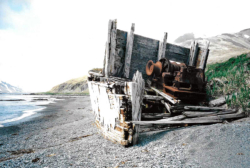
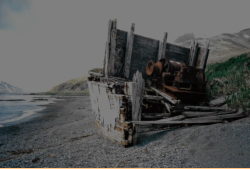

#26A. Shipwreck near Alexai Point. (Russ Marvin)
#18. View of Sarana Nose from Engineer Hill. Note the old
bunker in the foreground. (Russ Marvin)
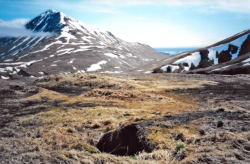
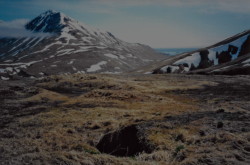

![Lake Corries near Chichagof Harbor. [Russ Marvin]](index_htm_files/267340.jpg)
![Lake Corries near Chichagof Harbor. [Russ Marvin]](index_htm_files/237632.jpg)
![Lake Corries near Chichagof Harbor. [Russ Marvin]](index_htm_files/237633.jpg)
![View of Massacre Bay from beach near Alexai Point. [Russ Marvin]](index_htm_files/267341.jpg)
![View of Massacre Bay from beach near Alexai Point. [Russ Marvin]](index_htm_files/237634.jpg)
![View of Massacre Bay from beach near Alexai Point. [Russ Marvin]](index_htm_files/237635.jpg)
![Marsden Matting (PSP) at the site of the WWII airfield at Alexai Point. [Russ Marvin]](index_htm_files/267342.jpg)
![Marsden Matting (PSP) at the site of the WWII airfield at Alexai Point. [Russ Marvin]](index_htm_files/237636.jpg)
![Marsden Matting (PSP) at the site of the WWII airfield at Alexai Point. [Russ Marvin]](index_htm_files/237637.jpg)
![An old shipwreck at Alexai Point. [Russ Marvin]](index_htm_files/267343.jpg)
![An old shipwreck at Alexai Point. [Russ Marvin]](index_htm_files/237638.jpg)
![An old shipwreck at Alexai Point. [Russ Marvin]](index_htm_files/237639.jpg)
#27. A second shipwreck near Alexai Point. (Russ Marvin)
![Attour staff member Jerry Rosenband observes some red faced cormorants near Murder Point. [Russ Marvin]](index_htm_files/267344.jpg)
![Attour staff member Jerry Rosenband observes some red faced cormorants near Murder Point. [Russ Marvin]](index_htm_files/237640.jpg)
![Attour staff member Jerry Rosenband observes some red faced cormorants near Murder Point. [Russ Marvin]](index_htm_files/237641.jpg)
#29. Attour staff member Jerry Rosenband observes some
red faced cormorants near Murder Point. (Russ Marvin)
![US Coast Guard C-130 crash site near Krasni Point. [Russ Marvin]](index_htm_files/224596.jpg)
![US Coast Guard C-130 crash site near Krasni Point. [Russ Marvin]](index_htm_files/237642.jpg)
![US Coast Guard C-130 crash site near Krasni Point. [Russ Marvin]](index_htm_files/237643.jpg)
#34. US Coast Guard C-130 crash site near Krasni Point.
(Russ Marvin)
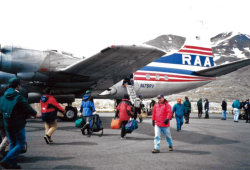
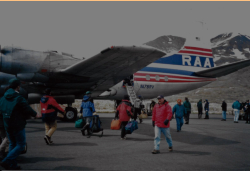

#32. Boarding the plane to depart Attu. (Russ Marvin)
#31. Group photo of the Attour trip participants, June 17,
2000. (Russ Marvin)
#33. A last view of Attu as we depart for Anchorage. (Russ
Marvin)
![A second shipwreck near Alexai Point. [Russ Marvin]](index_htm_files/267347.jpg)
![A second shipwreck near Alexai Point. [Russ Marvin]](index_htm_files/237646.jpg)
![A second shipwreck near Alexai Point. [Russ Marvin]](index_htm_files/237647.jpg)
![A last view of Attu as we depart for Anchorage. [Russ Marvin]](index_htm_files/267348.jpg)
![A last view of Attu as we depart for Anchorage. [Russ Marvin]](index_htm_files/237648.jpg)
![A last view of Attu as we depart for Anchorage. [Russ Marvin]](index_htm_files/237649.jpg)

![Rescue team on site at USCG C-130 crash location. [Russ Marvin]](index_htm_files/224601.jpg)
![Rescue team on site at USCG C-130 crash location. [Russ Marvin]](index_htm_files/237650.jpg)
![Rescue team on site at USCG C-130 crash location. [Russ Marvin]](index_htm_files/237651.jpg)
#35. Rescue team on site at USCG C-130 crash location.
(Russ Marvin)
![With increasingly inclement weather the rescue team brought back nine survivors. Two USCG crew members died in the crash. [KTVA-AP]](index_htm_files/224602.jpg)
![With increasingly inclement weather the rescue team brought back nine survivors. Two USCG crew members died in the crash. [KTVA-AP]](index_htm_files/237652.jpg)
![With increasingly inclement weather the rescue team brought back nine survivors. Two USCG crew members died in the crash. [KTVA-AP]](index_htm_files/237653.jpg)
#36. With increasingly inclement weather the rescue team
brought back nine survivors. Two USCG crew members died
in the crash.

On 30 July 1982 a Coast Guard HC-130H #1600 crashed on Attu’s Krasni Point while
attempting to land at LORAN STATION ATTU during inclement weather. Nine crew
members survived, two crew members perished in the crash. The pilot of the rescue
helicopter, then USCG Capt. William Peterson, flew in heavy fog and high winds across 90
miles of open sea from the USCG Cutter “Mellon” to effect the rescue. These are photos of
the crash scene. Click on the link below the photos to view the entire article as
reproduced, or click HERE to view KTVA-AP’s online presentation.
Krasni Point is classified as a “Cape” in Aleutians West County, Attu, Alaska, and is located at
N53
o
06’17.21” x E172
o
51’54.23”, halfway between Temnac Bay and Massacre Bay, Attu, AK.

![Left to right: Tim Reilly, Jack Nourse, and me, Russ Marvin. [Russ Marvin]](index_htm_files/224614.jpg)
![Left to right: Tim Reilly, Jack Nourse, and me, Russ Marvin. [Russ Marvin]](index_htm_files/237654.jpg)
![Left to right: Tim Reilly, Jack Nourse, and me, Russ Marvin. [Russ Marvin]](index_htm_files/237655.jpg)
![Reeve Aleutian Airways L-188 Lockheed Electra N178RV on Attu. [Russ Marvin]](index_htm_files/267364.jpg)
![Reeve Aleutian Airways L-188 Lockheed Electra N178RV on Attu. [Russ Marvin]](index_htm_files/237656.jpg)
![Reeve Aleutian Airways L-188 Lockheed Electra N178RV on Attu. [Russ Marvin]](index_htm_files/237657.jpg)
#1. Reeve Aleutian Airways L-188 Lockheed Electra N178RV
on Attu. Reeve went out of business in Dec. 2000. N178RV is
now owned by Buffalo Airways of Canada with the
registration number C-FIJX. (Russ Marvin)
![Attour Base Camp. Bikes were used by tour participants to reach remote locations over trails. [Russ Marvin]](index_htm_files/267365.jpg)
![Attour Base Camp. Bikes were used by tour participants to reach remote locations over trails. [Russ Marvin]](index_htm_files/237658.jpg)
![Attour Base Camp. Bikes were used by tour participants to reach remote locations over trails. [Russ Marvin]](index_htm_files/237659.jpg)
#4. The front of the Attour Base Camp. Bicycles were used
by tour participants to travel to places on the island that
could be reached by trails. (Russ Marvin)
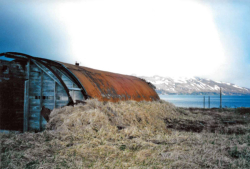
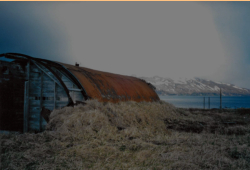

#7. The old Marine Brig. This is the last remaining
Quonset hut on Attu. (Russ Marvin)
![On the road to Engineer Hill. Portions of the road were snow covered, the bikes had to be pushed. [Russ Marvin]](index_htm_files/267367.jpg)
![On the road to Engineer Hill. Portions of the road were snow covered, the bikes had to be pushed. [Russ Marvin]](index_htm_files/237662.jpg)
![On the road to Engineer Hill. Portions of the road were snow covered, the bikes had to be pushed. [Russ Marvin]](index_htm_files/237663.jpg)
![The Japanese War Memorial on Engineer Hill. [Russ Marvin]](index_htm_files/267368.jpg)
![The Japanese War Memorial on Engineer Hill. [Russ Marvin]](index_htm_files/237664.jpg)
![The Japanese War Memorial on Engineer Hill. [Russ Marvin]](index_htm_files/237665.jpg)
![The Japanese War Memorial dedication plaque. [Russ Marvin]](index_htm_files/267369.jpg)
![The Japanese War Memorial dedication plaque. [Russ Marvin]](index_htm_files/237666.jpg)
![The Japanese War Memorial dedication plaque. [Russ Marvin]](index_htm_files/237667.jpg)
#17. The Japanese War Memorial dedication plaque. (Russ
Marvin)
![Vince Nguyen hiking on trail out to Chichagof Harbor. Rubber boots are a necessity on Attu. [Russ Marvin]](index_htm_files/267370.jpg)
![Vince Nguyen hiking on trail out to Chichagof Harbor. Rubber boots are a necessity on Attu. [Russ Marvin]](index_htm_files/237668.jpg)
![Vince Nguyen hiking on trail out to Chichagof Harbor. Rubber boots are a necessity on Attu. [Russ Marvin]](index_htm_files/237669.jpg)
#19. Vince Nguyen hiking on trail out to Chichagof Harbor.
Rubber boots are a necessity on Attu.
![Jack and Rosalie Nourse on the trail out to Alexai Point. [Russ Marvin]](index_htm_files/267371.jpg)
![Jack and Rosalie Nourse on the trail out to Alexai Point. [Russ Marvin]](index_htm_files/237670.jpg)
![Jack and Rosalie Nourse on the trail out to Alexai Point. [Russ Marvin]](index_htm_files/237671.jpg)
#23. Jack and Rosalie Nourse on the trail out to Alexai
Point. (Russ Marvin)
![View from the trail to Alexai Point. [Russ Marvin]](index_htm_files/267372.jpg)
![View from the trail to Alexai Point. [Russ Marvin]](index_htm_files/237672.jpg)
![View from the trail to Alexai Point. [Russ Marvin]](index_htm_files/237673.jpg)
#24. View from the trail to Alexai Point. (Russ Marvin)
![The shipwreck as seen from the beach. [Russ Marvin]](index_htm_files/267373.jpg)
![The shipwreck as seen from the beach. [Russ Marvin]](index_htm_files/237674.jpg)
![The shipwreck as seen from the beach. [Russ Marvin]](index_htm_files/237675.jpg)
#26. The shipwreck as seen from the beach. (Russ Marvin)
![The bird board in the Attour Base Camp. [Russ Marvin]](index_htm_files/267374.jpg)
![The bird board in the Attour Base Camp. [Russ Marvin]](index_htm_files/237676.jpg)
![The bird board in the Attour Base Camp. [Russ Marvin]](index_htm_files/237677.jpg)
#30. The bird board in the Attour Base Camp. This trip’s
notable accomplishment was the first North American
sighting of Swinhoe’s Red-Tailed Robin. (Russ Marvin)
![Group photo of the Attour trip participants, June 17, 2000. [Russ Marvin]](index_htm_files/267375.jpg)
![Group photo of the Attour trip participants, June 17, 2000. [Russ Marvin]](index_htm_files/237678.jpg)
![Group photo of the Attour trip participants, June 17, 2000. [Russ Marvin]](index_htm_files/237679.jpg)

















